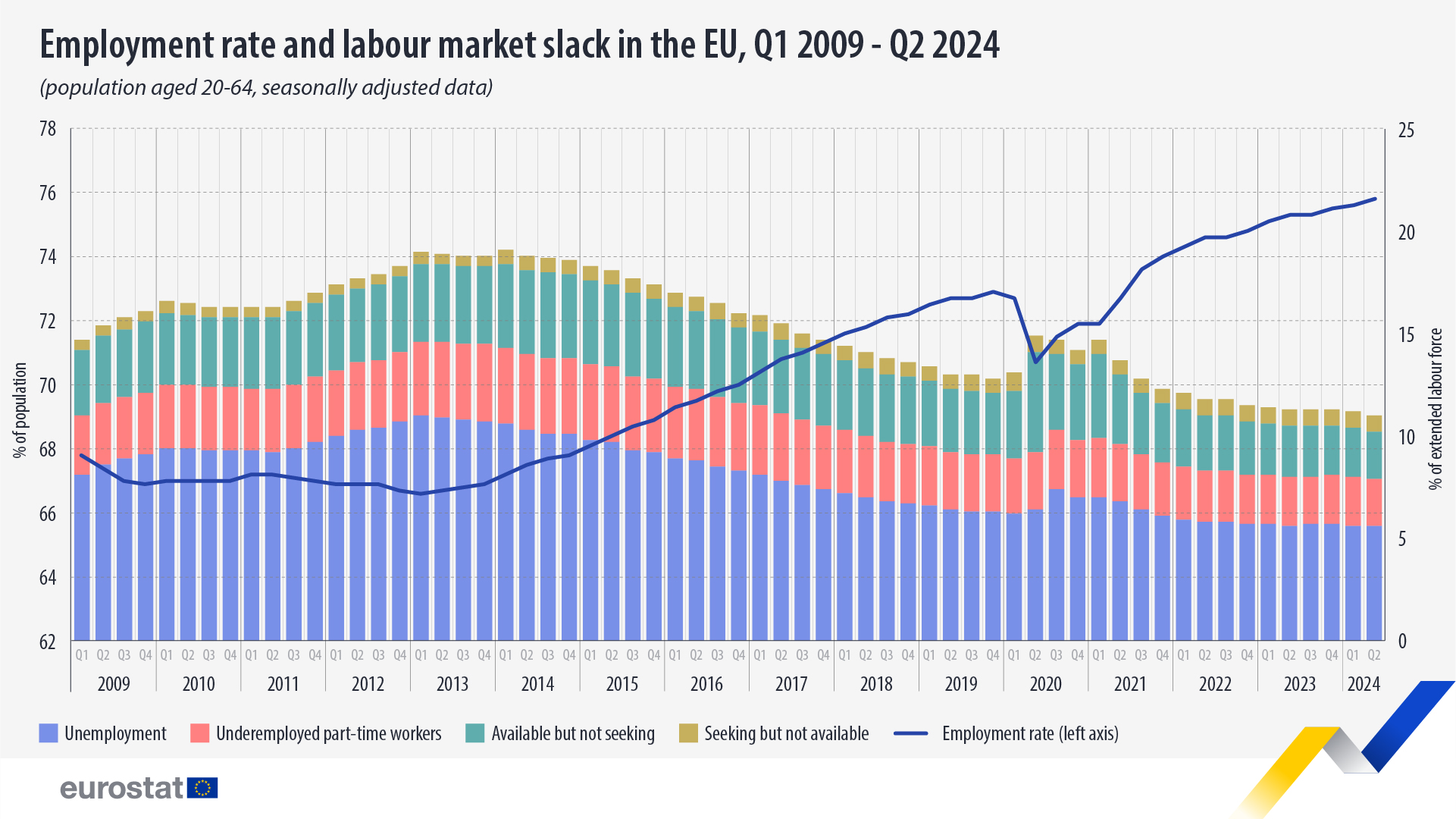In the second quarter of 2024, the job vacancy rate was 2.6% in the euro area, down from 2.9% in the first quarter of 2024 and down from 3.1% in the second quarter of 2023, according to figures published by Eurostat, the statistical office of the European Union. The job vacancy rate in the EU was 2.4% in the second quarter of 2024, down from 2.6% in the first quarter of 2024 and down from 2.9% in the second quarter of 2023.
In the euro area, the job vacancy rate in the second quarter of 2024 was
2.3% in industry and construction, and
2.9% in services.
In the EU, the rate was
2.2% in industry and construction, and
2.7% in services.
Job vacancy rate by Member States
Among the Member States for which comparable data are available (see country notes), the highest job vacancy rates in the second quarter of 2024 were recorded in Belgium, the Netherlands (4.4% in both of them) and Austria (4.0%). By contrast, the lowest rates were observed in Romania (0.7%), Bulgaria (0.8%), Poland and Spain (0.9% in both of them).
Compared with the same quarter of the previous year, the job vacancy rate increased in six Member States, remained stable in three Member States and decreased in eighteen Member States. The largest increase was observed in Greece (+0.9 pp). The largest decreases were recorded in Germany (-1.0 pp), Austria (-0.9 pp), and Sweden (-0.8 pp).
Breakdown by economic activity
The figure below presents the job vacancy rates of the EU and the euro area by economic activity, in the second quarter of 2024. Data are displayed for the business economy, for which data are available from all EU countries. The highest job vacancy rates, for both the EU and the euro area, were recorded in:
Section N: "Administrative and support service activities" that includes temporary employment agencies (3.9% in the euro area, 3.8% in the EU),
Section F: "Construction" (3.5% in the euro area, 3.2% in the EU),
Section I: "Accommodation and food service activities" (3.3% in the euro area, 3.2% in the EU),
Section J: "Information and communication" (3.2% in the euro area, 3.0% in the EU), and
Section M: "Professional, scientific and technical activities" (3.0% in the euro area, 2.8% in the EU).
Tables
In the second quarter of 2024, the employment rate of people aged 20-64 in the EU stood at 75.8%, an increase of 0.2 percentage points (pp) compared with the first quarter of 2024.
Labour market slack - encompassing those with unmet employment needs, a large part of which includes unemployed persons - amounted to 11.0% of the extended labour force aged 20-64 in the second quarter of 2024 (a decrease of 0.1 pp compared with the first quarter of 2024).
This information comes from data on the labour market in the second quarter of 2024 published today by Eurostat. This article presents only a handful of findings from the more detailed Statistics Explained article.

Source datasets: lfsi_emp_q and lfsi_sla_q
Between the first and the second quarter of 2024, Estonia (+1.0 pp), Lithuania (+0.9 pp) and Czechia (+0.8 pp) registered the highest increases in the employment rate among the 18 EU countries where employment rose. The employment rate remained stable in Italy, Poland and Slovakia and decreased in 6 EU countries, with the biggest decreases recorded in Slovenia (-0.7 pp) and Finland (-0.4 pp).

Source dataset: lfsi_emp_q
